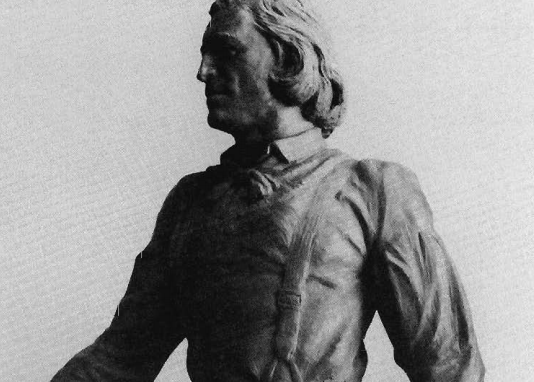Articles/Essays – Volume 26, No. 3
Intellectuals in Mormon History: An Update
More than twenty-four years ago, Leonard Arrington asked some fifty prominent Mormons to identify the most important intellectuals in Mormon history. He published his findings in the spring 1969 issue of Dialogue: A Journal of Mormon Thought as ‘The Intellectual Tradition of the Latter-day Saints.” After consulting with Arrington, I have replicated that earlier survey as closely as possible to discover what differences if any nearly a quarter of a century has made.
In order to cover a wide range of people in the survey, the help of four associates was enlisted. Dean L. May suggested the names of various Mormon historians who had a Ph.D. degree or the equivalent; L. Max Rogers suggested Mormon philosophers; Dale C. LeCheminant, Mormon educators; and Jessie L. Embry, Mormon women. All of their proposed names were utilized. Each person receiving a questionnaire was LDS (RLDS and non-Mormons were excluded) and had a Ph.D. degree or equivalent. In the original survey Arrington had used the wording “five most eminent intellectuals in Mormon history.” It was felt best not to explain in any more detail who one might include or exclude. Admittedly this statement is ambiguous since it could mean historians who are actively writing on various topics in Mormon history, or individuals who in Mormon history from 1830 to the present stand out as the most intellectually brilliant, or individuals who happen to be Mormon but are geniuses in their chosen fields. There was no need to place the choices in any order, since each individual was counted each time he or she was listed by a respondent and the total number of votes was added up for each individual. Each person to whom the survey form was sent was instructed not to vote for him- or herself or the writer.
The total number of questionnaires sent was 152 with 94 responses. Three persons only voted for four, and one respondent voted for Jan Shipps, despite instructions to exclude non-Mormons. The forty-nine individuals who received only one or two votes have been ignored. The results are as follows, listing the individuals in descending order except that all those receiving the same number of votes are listed alphabetically:
| B. H. Roberts | 73 |
| Orson Pratt | 52 |
| Sterling M. McMurrin | 41 |
| Leonard J. Arrington | 31 |
| Joseph Smith, Jr. | 31 |
| James E. Talmage | 30 |
| Hugh W.Nibley | 25 |
| John A. Widtsoe | 19 |
| Lowell L. Bennion | 16 |
| Parley P. Pratt | 13 |
| Henry Eyring | 11 |
| Eliza R. Snow | 8 |
| Richard Bushman | 7 |
| Juanita Brooks | 6 |
| E. E. Ericksen | 5 |
| Thomas G. Alexander | 4 |
| Fawn M. Brodie (excommunicated) | 4 |
| J. Reuben Clark, Jr. | 4 |
| Eugene England | 4 |
| Dallin H. Oaks | 4 |
| D. Michael Quinn | 4 |
| Brigham Young | 4 |
| Obert C. Tanner | 3 |
| Edward W. Tullidge (excommunicated) | 3 |
| Laurel Thatcher Ulrich | 3 |
Since Arrington only named the top twelve, it is instructive to compare the twelve who received the most votes in the present survey.
Comparative Order of Ranking
| 1969 | 1993 |
| 1. B. H. Roberts | B. H. Roberts |
| 2. Orson Pratt | Orson Pratt |
| 3. Joseph Smith, Jr. | Sterling M. McMurrin |
| 4. Sterling M. McMurrin | Leonard J. Arrington |
| 5. James E. Talmage | Joseph Smith, Jr. |
| 6. John A. Widtsoe | James E. Talmage |
| 7. Lowell L. Bennion | Hugh W. Nibley |
| 8. Hugh W. Nibley | John A. Widtsoe |
| 9. Parley P. Pratt | Lowell L. Bennion |
| 10. E. E. Ericksen | Parley P. Pratt |
| 11. William H. Chamberlin | Henry Eyring |
| 12. J. Reuben Clark, Jr. | Eliza R. Snow |
As can be seen the bottom three in 1969 have been replaced by others; but the top nine are still in the current list. In 1969 only Sterling M. McMurrin, Lowell L. Bennion, and Hugh W. Nibley of the top twelve were alive. Those same three are still alive, but McMurrin has moved from fourth to third, Bennion from seventh to ninth, and Nibley from eighth to seventh; also Leonard Arrington himself has entered the ranking and moved to fourth position.
The only persons from among the top twelve to receive a separate article in the recently published Encyclopedia of Mormonism are Joseph Smith, Orson Pratt, and Parley P. Pratt, but the encyclopedia article, “Intellectual History,” by Richard F. Haglund, Jr., and David J. Whittaker, mentions either in the text or the bibliography all of the top twelve.
Truman G. Madsen, referring to the 1969 Arrington survey, summarized the ranking of Mormon intellectuals by writing in his biography of B. H. Roberts, Defender of the Faith, that “far and away the . . . choice of the majority was a peerless blacksmith—B. H. Roberts.” What the present survey demonstrates is that sixty years after his death, B. H. Roberts remains the foremost intellectual in Mormonism, and if anything his position is even stronger now: in 1969 Roberts was 17 percent ahead of the second position; today he is 42 percent ahead.


 Back to full Issue
Back to full Issue

